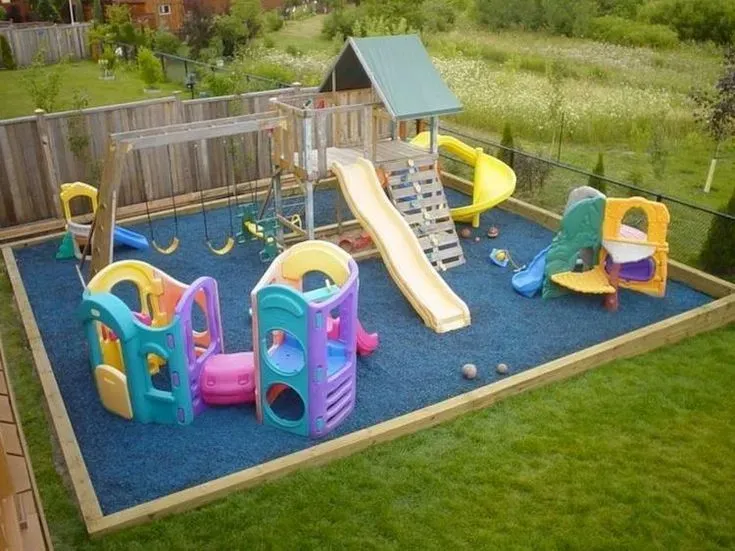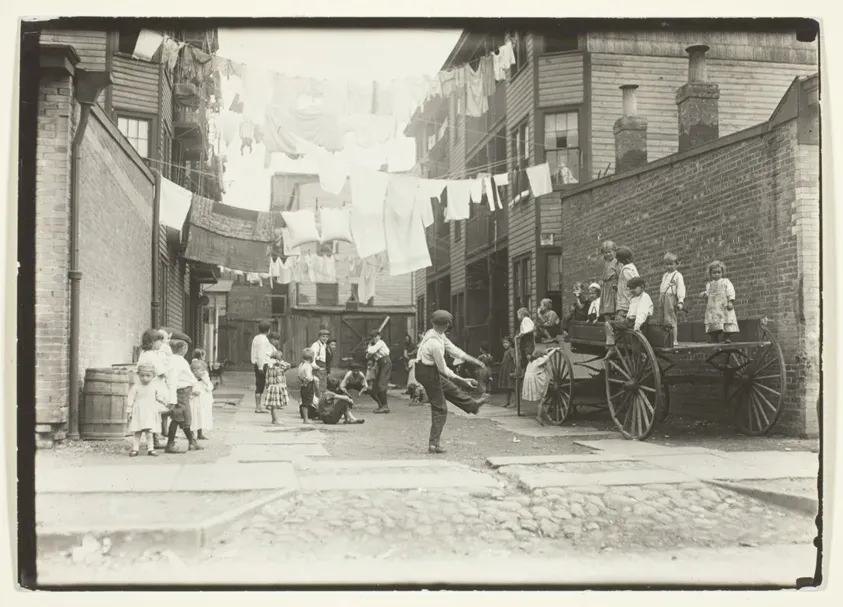Table of Contents
Got a backyard that’s less sprawling lawn and more postage stamp? You’re not alone. Many folks stare out their back door, see limited square footage, and sigh, thinking a proper play area for the kids is just a pipe dream. But what if you could squeeze in some serious fun without taking over your entire outdoor space? That's where a **small backyard playground** comes into its own. It’s not about replicating a full-blown park; it’s about smart design and picking the right equipment.
Maximizing Fun in Tight Spaces: Why a Small Backyard Playground?

Maximizing Fun in Tight Spaces: Why a Small Backyard Playground?
Alright, so you've got a backyard that feels more like a large patio than a sprawling estate. The dream of a massive swing set with monkey bars stretching to the heavens seems impossible, right? Wrong. This is exactly why the concept of a small backyard playground is a game-changer. It’s designed specifically for those tighter spots, proving you don't need acres of land to give your kids a dedicated, exciting outdoor play area. These compact wonders are engineered to pack maximum features into minimal square footage, focusing on vertical climbing, clever swing beam placement, and multi-functional components that keep kids engaged without eating up your entire yard.
Finding the Perfect Fit: Types of Small Backyard Playsets

Finding the Perfect Fit: Types of Small Backyard Playsets
so you're sold on the idea that a small yard doesn't mean no fun. Great! Now, how do you actually find something that fits and isn't just a glorified seesaw? This is where you start looking at the different breeds of playsets designed for less square footage. Forget those sprawling castles you see in catalogs; we're talking about smart, vertical designs. Think elevated play decks with climbing walls or ladders underneath, swing beams that might only hold one or two swings but are strategically placed, and combined features like a slide that starts from a compact tower. Modular designs are your friend here – ones where you can add or remove components later. It’s about prioritizing the activities your kids love most and finding a set that stacks or combines them efficiently.
Picking Your Playset: What to Look for in a Compact Playground Design

Picking Your Playset: What to Look for in a Compact Playground Design
Size Isn't Everything: Focusing on Smart Design
you've accepted your fate: no football field in your backyard. Now for the fun part – picking the perfect small backyard playground. First thing's first: measure your space. And then measure it again. Know your exact dimensions, including any obstacles like trees, fences, or that weirdly placed shed. Don't just look at the footprint of the playset itself; remember you need clearance around it for swings and slides. A compact design often means going vertical. Look for sets that incorporate climbing walls, ladders leading to elevated decks, and perhaps a tube slide that takes up less linear space than a straight one. The key is multi-functional elements. Can the space under the deck be a sandbox? Does the ladder double as a rock wall?
Materials, Safety, and Not Breaking the Bank
Once you've got a handle on dimensions and layout ideas for your small backyard playground, think about the nitty-gritty: materials and safety. Most residential playsets are either wood or metal. Wood (often cedar or redwood for durability) looks natural but requires maintenance. Metal is typically lower maintenance but can get hot in the sun. Safety is non-negotiable. Look for features like non-slip steps, sturdy handrails, and swing hangers that won't wear out quickly. Check the weight limits on swings and decks – especially if your kids have friends over. Finally, budget. Small doesn't always mean cheap. Prioritize features that are most important to your kids and look for sales or discontinued models. Remember to factor in the cost of safety surfacing, like mulch or rubber tiles – it’s not optional, it’s crucial.
So, what features are non-negotiable for your tight space?
- Vertical climbing options (ladders, rock walls)
- Compact slide types (tube or spiral)
- Multi-use components (deck with sandbox underneath)
- Durable, safe materials appropriate for your climate
- Adequate safety clearance around all moving parts
Making the Most of Your Small Backyard Playground: Accessories and Setup
Boosting Fun with Smart Accessories
you've picked out the perfect base for your small backyard playground. But let's be real, a basic swing set or climbing frame can get old fast. This is where accessories become your secret weapon, especially when space is tight. You're not adding more footprint, you're adding more activities vertically or integrated into the existing structure. Think about a steering wheel or periscope attached to the play deck – instant ship or fort. A rope ladder or climbing net offers a different challenge than the standard ladder. Even swapping out a basic swing for a disc swing or a tire swing (if the frame allows) adds variety without needing extra hangers.
Don't underestimate the power of simple additions. A small bell, a mailbox, or even a chalkboard attached to the side can spark imaginative play. These aren't huge, expensive add-ons, but they make the existing structure feel new and exciting. They leverage the space you already have, making every square inch of your small backyard playground work harder.
Strategic Placement is Everything
Now that you've got the playset and maybe a few clever add-ons, where does it actually go? You measured, sure, but placement is more than just fitting it in. Consider sun exposure – nobody wants a scorching hot slide in the afternoon. Think about visibility – can you easily supervise the kids from the house or patio? And importantly, consider the required safety zones. Swings need clearance in front and back, slides need space at the bottom. Just because the playset fits doesn't mean you can plop it right next to the fence or the back door.
Sometimes, angling the playset differently in the yard opens up more usable space elsewhere. Don't be afraid to try a few layouts before you start the final build. A compact small backyard playground needs careful positioning to ensure safety clearances are met while still leaving room for kids to run around (or at least, navigate) the rest of the yard.
Things to double-check for placement:
- Adequate safety surfacing underneath and around
- Clearance zones for swings and slides
- Visibility from primary supervision points
- Sun exposure during peak play hours
- Distance from fences, trees, or other obstacles
Keeping It Fresh and Functional
Alright, the playset is up, the accessories are attached, and the kids are (hopefully) loving it. Your job isn't quite done. A small backyard playground, just like its larger cousins, needs some looking after. Check bolts and screws regularly – they loosen over time. Sand down any splinters on wooden parts. Clean plastic components. This isn't just about aesthetics; it's about safety and longevity. A well-maintained playset is a safe playset, and it lasts longer, giving you more bang for your buck.
To keep the kids engaged, rotate accessories if you have extras, or introduce new simple items occasionally. Maybe add a small tent or tunnel next to it for a week. The goal is to prevent boredom without needing to buy a whole new structure. A little effort in maintenance and occasional tweaks goes a long way in ensuring your small backyard playground remains a favorite spot.
Making Your Small Backyard Playground a Reality
So, you see? A small backyard doesn't sentence your kids to a life devoid of slides and swings. It just means you need to think smarter, not bigger. By focusing on compact designs, understanding the footprint of different playsets, and perhaps adding a few clever accessories, you can create a dedicated zone for climbing, swinging, and imagining. It won't be the municipal park, and that's fine. The goal is usable, engaging fun right outside your door, proving that even in tight quarters, playtime can still be a significant event.